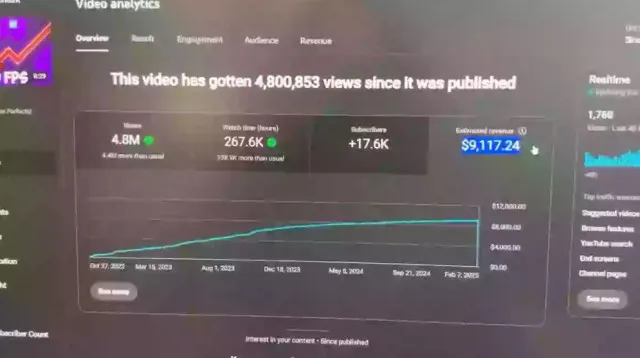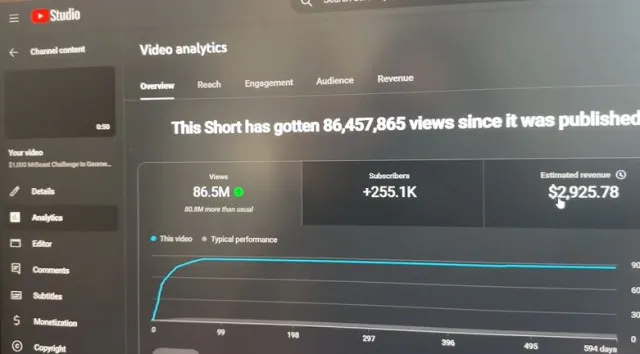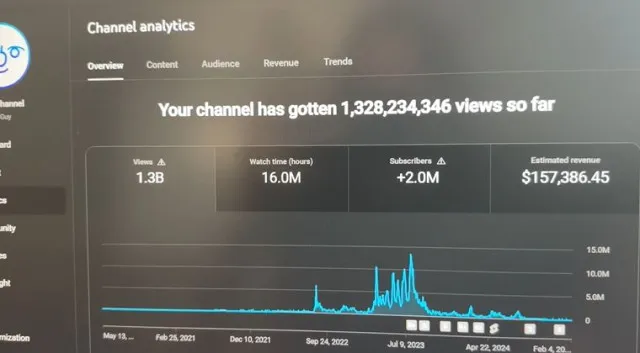On social media, many viewers were stunned after a viral video revealed the surprising truth about how much YouTube pays for 1.3 billion views.
How much do YouTubers really make from viral content?
A creator with 1.3 billion views has revealed his earnings, leaving many surprised.
His insights offer a transparent look into YouTube’s revenue system and the factors that affect earnings.
A YouTuber shares his total earnings
Kai Nemzer, a former gaming content creator, revisited his old channel to disclose how much he earned from YouTube ads.

In the footage, He analyzed six of his most successful videos, showing ad revenue figures that shocked many viewers.
One of his long-form videos had 4.8 million views and earned $9,117.24 in ad revenue.
While, it also secured an additional $4,000 sponsorship deal.
In contrast, a short-form video with 5.7 million views made $4,085.0—less than half the revenue of the longer content.
Revenue breakdown: How much did each video earn?
Nemzer compared his earnings across several viral videos:
– 6.3 million views (1:17 minutes long)→ $4,456.32
– 82.6 million views (54 seconds long)→ $4,112.20
– 86.5 million views (short format)→ $2,925.78
– 94.9 million views → $3,395.65 and 145,200 new subscribers

Despite having millions of views, some short videos made surprisingly little money. This raised questions about the differences in YouTube revenue streams.
Total earnings from 1.3 billion views
Nemzer revealed his total earnings from 1.3 billion views across all his videos.
– Total revenue: $157,386.45
– Totalwatch time: 16 million hours
– Total subscribers: 2 million
He admitted that while the income was decent, it wasn’t enough to keep him making gaming content. Instead, he pivoted to helping entrepreneurs grow their YouTube channels.
Why do some videos earn more than others?

On social media, many viewers expected Nemzer to have made much more.
While, some assumed 1.3 billion views would generate $300,000 or more. So why the disparity?
Several factors influence YouTube earnings:
1. Video length – Longer videos generate more ad placements, leading to higher earnings per view.
2. Viewer location – Ads shown in high-income countries (like the US) pay more than those in lower-income regions.
3. Ad type – Certain ads (like skippable vs. non-skippable) pay more than others.
4. Advertiser budget – Some industries pay higher rates for ad placements, influencing earnings.
5. YouTube’s revenue split – Creators receive 55% of ad revenue, while YouTube takes 45%.
How do YouTubers qualify for monetization?

To make money on YouTube, creators must join the YouTube Partner Program (YPP). The requirements include:
– 1,000 subscribers
– 4,000 watch hours in the past 12 months
– AdSense account approval
Once in the program, creators can earn through ads, sponsorships, memberships, and other monetization methods.
Nemzer’s earnings prove that viral views don’t always mean huge paychecks.
Video length, ad types, and audience demographics all play a role. For aspiring YouTubers, understanding these factors is key to maximizing earnings.